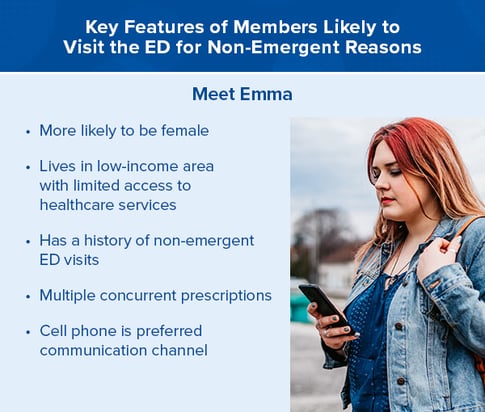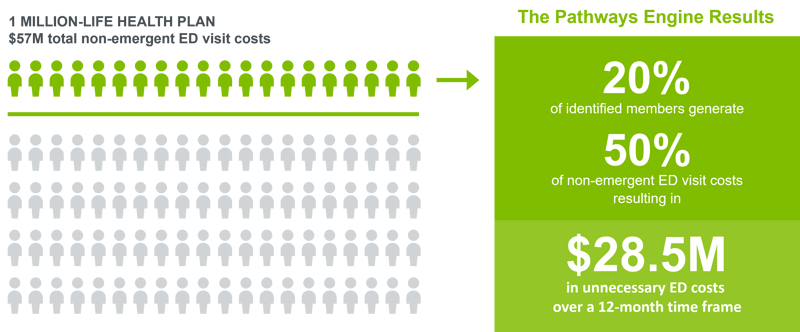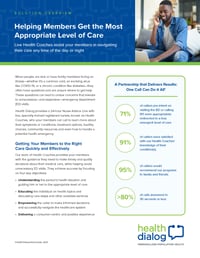Recently, we did an article on non-emergent reasons people visit the emergency department (ED), such as not being sure if symptoms like dizziness are serious. According to a report by UnitedHealth Group, a visit to the ED, at an average cost of $2,032, is 12 times higher than a physician’s office and 20% to 30% of those visits are avoidable.[1]
If you could anticipate in advance which members were most likely to visit the ED for a non-emergent reason, you could provide timely interventions to redirect them to a more appropriate and cost-effective level of care. But how do you identify people who are likely to go to the ED before the situation even occurs?
Model Behavior: Predicting Unnecessary ED Visits
Using the Pathways Engine, our predictive analytics and machine learning platform that utilizes over 600 data points—from healthcare data to socio-economic factors—Health Dialog developed a predictive model that allows us to identify members likely to go to the ED for non-emergent symptoms in the future three months. As discussed in a previous blog post, predictive modeling is a way of predicting the future based on what has occurred in the past and machine learning is a type of artificial intelligence that allows for the incorporation of vast amounts of data points to form more accurate predictions.
Our machine learning platform incorporates the following data categories to predict non-emergent ED visits:
- Member demographics
- Previous ED usage
 Prescription history
Prescription history- Provider-type history
- CPT and diagnosis code history
- Consumer behavior
- Social determinants of health
To define a non-emergent visit, our model incorporated an algorithm developed by the NYU Center for Health and Public Service Research that examined almost 6,000 ED records and classified each case into four categories, including non-emergent reasons for the ED visit.[2]
Using all of this data, we were able to paint a picture of a person who is likely to visit the ED for a non-emergent reason.
Results that Count
Our results have shown that the top 20% of members identified using this model are 3.6 times more likely to have a non-emergent ED visit than other members and generate 50% of the non-emergent ED visit costs. With a 1 million-life health plan, non-emergent ED visits cost approximately $57 million annually. By proactively communicating lower cost treatment options to this 20% of members, the health plan could save $28.5 million over a 12 month time frame.

Health Dialog is able to use this model to identify members most likely to inappropriately visit the ED. We can then use their most likely engagement method to tailor communications that direct the member to our Nurse Advice Line where they can get the information they need to manage their situation appropriately. We have found that 70% of callers to our Nurse Advice Line who initially intended to visit the ED and could be treated in a less acute setting were redirected to a more appropriate level of care. Identifying these members and providing the Nurse Advice Line as a resource can provide substantial savings for both the member and the plan while ensuring quality care.
[1] UnitedHealth Group (2019). The High Cost of Avoidable Hospital Emergency Department Visits. https://www.unitedhealthgroup.com/newsroom/posts/2019-07-22-high-cost-emergency-department-visits.html.
[2] https://wagner.nyu.edu/faculty/billings/nyued-background


